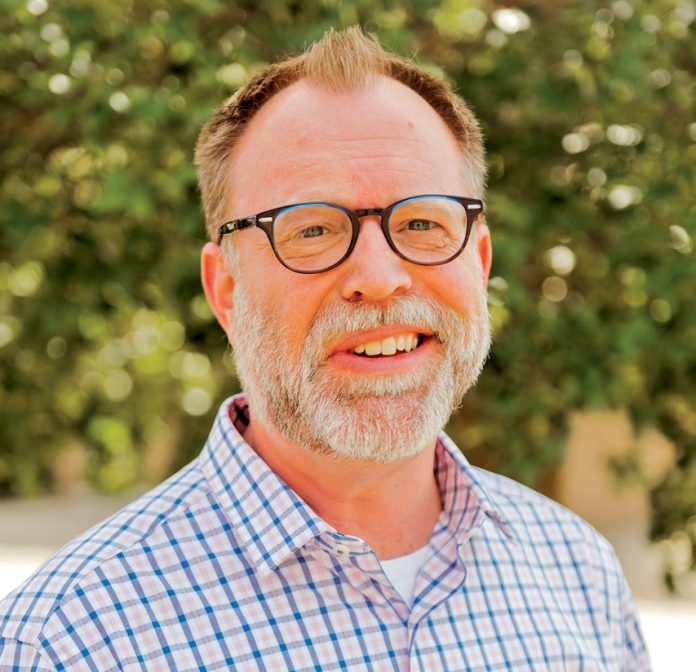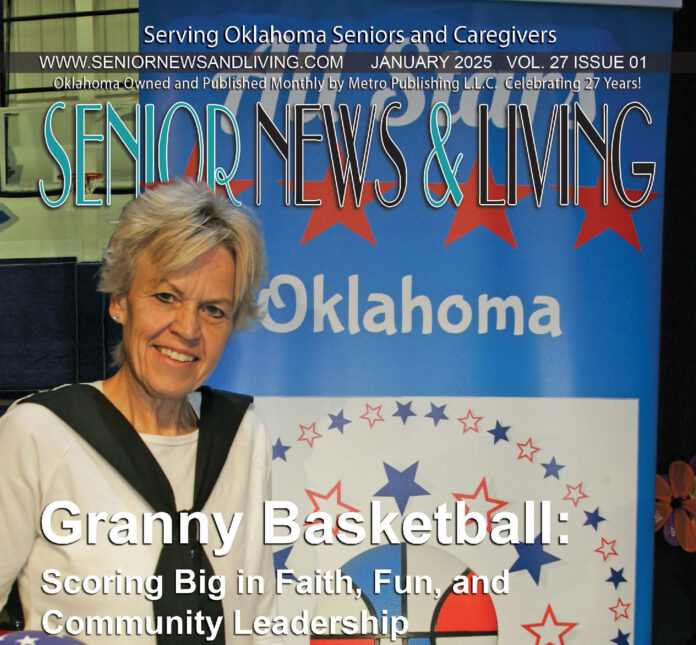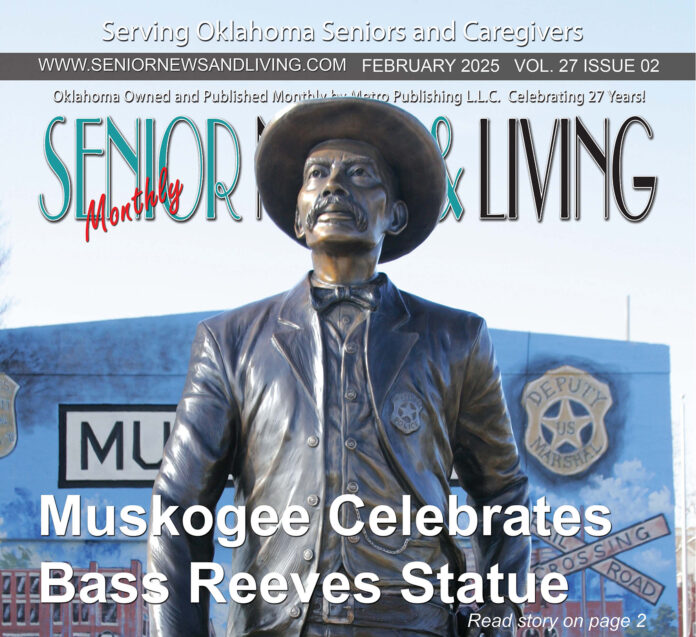
A Fresh Start
Story by Matt Neil, Oklahoma Real Estate Planner
Now that the new year is underway, many of us are taking time to reflect on where we’ve been this past year and where we want to go in 2025. For seniors, this season often brings an opportunity to evaluate what’s truly important and make decisions that align with your current needs and future goals. Whether you’re considering downsizing, relocating, asset distribution, or simply preparing for the unexpected, planning your real estate for the new year is a meaningful way to start fresh and ensure peace of mind for the months and years ahead.
Your home is more than just a structure—it’s the heart of your life. However, as time goes on, your needs may change. Start by asking yourself a few key questions about your current home:
• Is this home still the right fit for my lifestyle? If maintaining a large home has become overwhelming or certain spaces are longer being used, it may be time to consider downsizing.
• Is this home accessible and safe for aging in place? Single-level living, wide doorways, and accessible bathrooms can make a significant difference as mobility changes. If your current home doesn’t meet these needs, you might consider modifying it or moving to one that does.
• Does this home align with my financial goals? As a senior, financial stability is essential. If your home is costing more than it should in taxes, utilities, or maintenance, it might be time to explore other options.
Downsizing doesn’t mean giving up your independence or sacrificing the things you love—it means simplifying your life to focus on what truly matters. Moving into a smaller, more manageable home can free up time and resources to spend on hobbies, travel, or family.
Many seniors in the Oklahoma City Metro area are finding great options in single-level homes, condos, or communities that offer maintenance-free living. These homes not only reduce physical and financial strain, but also provide opportunities to build new connections and enjoy a vibrant community.
Additionally, if you’re thinking about selling your home, the new year is a great time to start preparing. Decluttering, making small updates, and consulting with a certified real estate planner can help you get the best value for your property when you’re ready to sell.
The Oklahoma City Metro real estate market offers unique opportunities, but it’s always changing. Stay informed about market trends and how they might impact your decisions. For example, rising interest rates or demand for specific types of homes could influence the timing of a sale or purchase.
The new year is a time for fresh starts and thoughtful planning. Whether you’re considering a move, simplifying your life, or preparing for your future, taking proactive steps now will ensure you enter the year with confidence and clarity. As people who deeply care about helping seniors navigate these decisions, we’d be honored to support you in making the right choices for your unique needs. Give us, your certified Real Estate Planner, a call at 405-757-9980, or email at info@vibrantok.com.
Here’s to a year filled with peace, joy, and the comfort of knowing your real estate plans are working for you.
Matt Neill is a realtor who has lived in Oklahoma over 17 years and enjoys spending time with his family creating memories, reading, and cheering on the OKC Thunder.
Granny Basketball: Scoring Big in Faith, Fun, and Community Leadership
Granny Basketball Leadership in Oklahoma City
From Courtside to Community: Lori Rupert’s Legacy of Leadership in Granny Basketball
story and photo by Darl DeVault, contributing editor
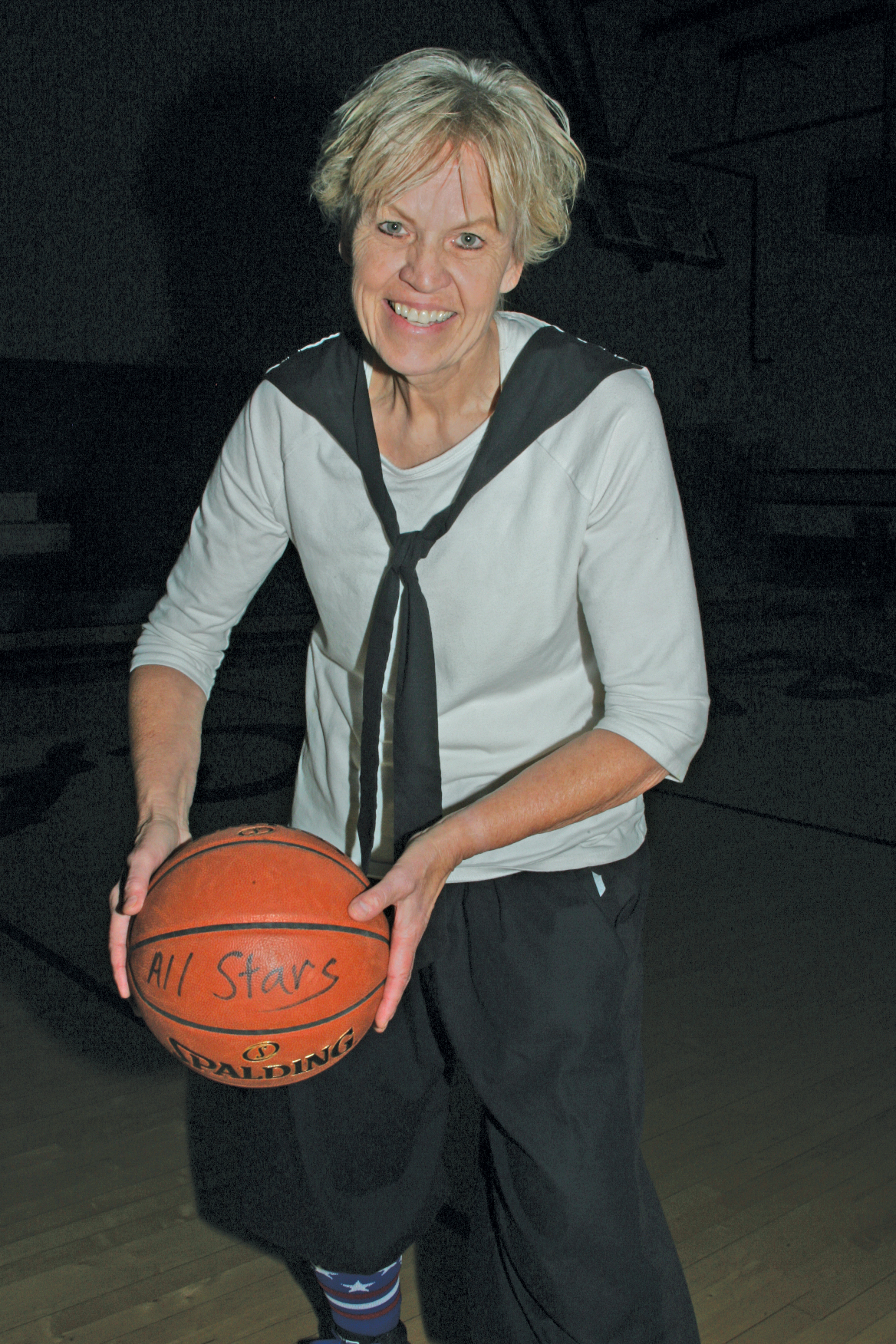
Lori Juntila Rupert is a leader on and off the court, playing for the Oklahoma All-Stars in the Granny Basketball® League. Billed as a gentle game for women of a certain age, the league empowers lady players 50 and over to reignite their passion for basketball and team camaraderie.
Rupert is leading in scoring and modeling character-driven leadership for the Oklahoma All-Stars.
Rupert and her husband Tim, the All-Stars coach, live in Del City and devote countless hours to organizing and recruiting for the league. They recently recruited players by working a booth at the 2024 Second Half Expo at the Oklahoma City National Cowboy & Western Heritage Museum.
Rupert started playing Granny Basketball® in 2018 for long-time Midwest City and Del City girl’s basketball Coach Kay Talley. Talley founded the Oklahoma Twisters, the first Granny team in Oklahoma City.
Later, the Ruperts branched off to form the All-Stars in 2022.
With practices and organizing charity events surrounding their league games, the couple is heavily involved in the local team’s success.
Recruiting is serious business for the couple and all league members trying to involve other players, team leaders, coaches, referees, scorekeepers, coordinators, announcers, volunteers, and sponsors.
This type of senior basketball is played without the phrase ‘ball hog’ since half the court is devoted to scoring.
This is further emphasized when a regular court is taped off with new lines using blue painter’s tape. They create three courts, a mid-court that players must stay in while passing the ball from the defensive end to the offensive players. Players can only dribble twice with each possession before shooting or passing.
“There is no running and jumping-that is a turnover,” Rupert said. “If someone falls, it is called ‘Granny Down,’ and that player has to leave the game temporarily. The average age of our team is about 60, and our oldest player is 80.”
As team captain and playing guard, Rupert takes a pass, sets her shot without jumping, and usually adds to the score and team morale. Smooth and well-practiced, she is an excellent model for the rest of the ladies.
In basketball terminology, she is a shooting guard, one of the two reliable scorers because she takes high-percentage close-in and mid-range shots when she sees the opportunity.
A certain amount of nostalgia fuels the fun. Some ladies are preserving their memories from days gone by. It affords a chance to relive simpler times when they could escape into a game they loved. It brings back the good times they had in their youth.
The players are serious about supporting their communities, as recent benefit games with two local firefighter teams raised money for Christmas gifts for children in their communities. The events featured silent auctions for baked goods and gift baskets.
Unlike some women who play Granny Basketball, because they didn’t have a good chance to play in their youth when women’s sports became widely accepted in schools, Rupert was afforded ample opportunity.
Rupert puts her faith in God first. When asked to list her priorities in life, she quickly cited God as the first choice.
Speaking with Rupert, it goes without saying that her firm belief in God motivated her to use her skillset from playing on Northern Michigan University’s women’s basketball team from 1977 to 1981. She was inducted into the Sports Hall of Fame in 2008.
She was selected to try out for the U.S. Olympic team, only to be ill during tryouts.
Now at age 65, she will soon retire as Director of Academic Programs for Southeastern Oklahoma State University at Tinker Air Force Base and Rose State College Outreach Campuses. There, she teaches classes, develops, plans, supervises and directs master’s degree and undergraduate course offerings. Her long and prestigious academic career spans earning three master’s degrees and two master’s certificates.
Her college sports experience shows as she helps build a wider emphasis on the Granny Basketball® League to be healthy and support her community.
She helps fellow Oklahomans at their practices, aiding in their early exposure to understanding the rules and catching on. This can take longer when women come out for the team who have never played basketball. With everyone welcomed, the players also lend a hand at coaching to quickly bring newbies up to speed.
The League began a competitive exercise program for women 50 and over in 2005 as an exhibition game in Iowa. There, Barb McPherson Trammell helped her father, a longtime Iowa high school girl’s basketball coach, with his memoir.
She was struck by his memory of the first girls’ game he saw in 1920. The players wore costumes, divided the court into thirds and played by restricted movement rules. Trammell formed a team to provide competitive exercise appropriate to the largest number of women, not just ladies who played high school or college basketball.
Now, more than 600 players on 46 teams in 10 states in the USA and a team in Toronto, Canada, play in the league. There are 14 teams in Iowa, 9 in Kansas, 8 in Texas, 4 in Oklahoma and 3 in Missouri, two in Minnesota, Wisconsin, and California, and one in Louisiana and Arizona. New teams continue to form every year.
Oklahoma last hosted the National Granny Basketball Tournament in Norman in 2018. Norman also hosted in 2014 and 2017.
Many of those 600 players are seasoned veterans. The league insists that the teams play safely according to the 1920s rules. The safety part has been evident since this year; 46 ladies have received 15-year pins for their continuous league play, while 117 have played safely for 10 years.
As a throwback to a less strenuous game, all the teams wear modest uniforms: simple white shirts and middy collars with numbers stitched on the back without team names. The uniform is completed with black bloomers that go just below the knee-the only flair of team affiliation is the choice of colorful knee socks.
Individual flairs of talent enlarge the competitive side when athletes hurry to pass or make a shot within the rules. This is all under the eyes of dedicated referees, who, on average, whistle a play stopped about every four minutes of a 32-minute game.
The games inspire ladies of all ages to stay active with the skills and competitive spirit to change perceptions of the capabilities of older adults and what it means to grow old. This illustrates the century-long striving for women’s equality in sports and the competitive and ambitious nature of female athletes of all ages.
Their playing basketball highlights the support and encouragement the women get from being part of a team. Women with varying personalities have become friends during their many years playing together. This friendship strengthens and motivates them in this example of community. They encourage other women to find fellowship in athletic teams with a shared passion. This support is helpful to a person’s well-being and mental health.
Anyone interested in seeing what Granny Basketball is all about and attending a practice after the first of the year may contact Lori at ljrupert@yahoo.com. See more information at Wanna Play – Granny Basketball League. Granny Basketball League, Inc., is a 501(c)3 non-profit corporation.
Muskogee Celebrates Bass Reeves Statue
story and photo by Darl DeVault, contributing editor
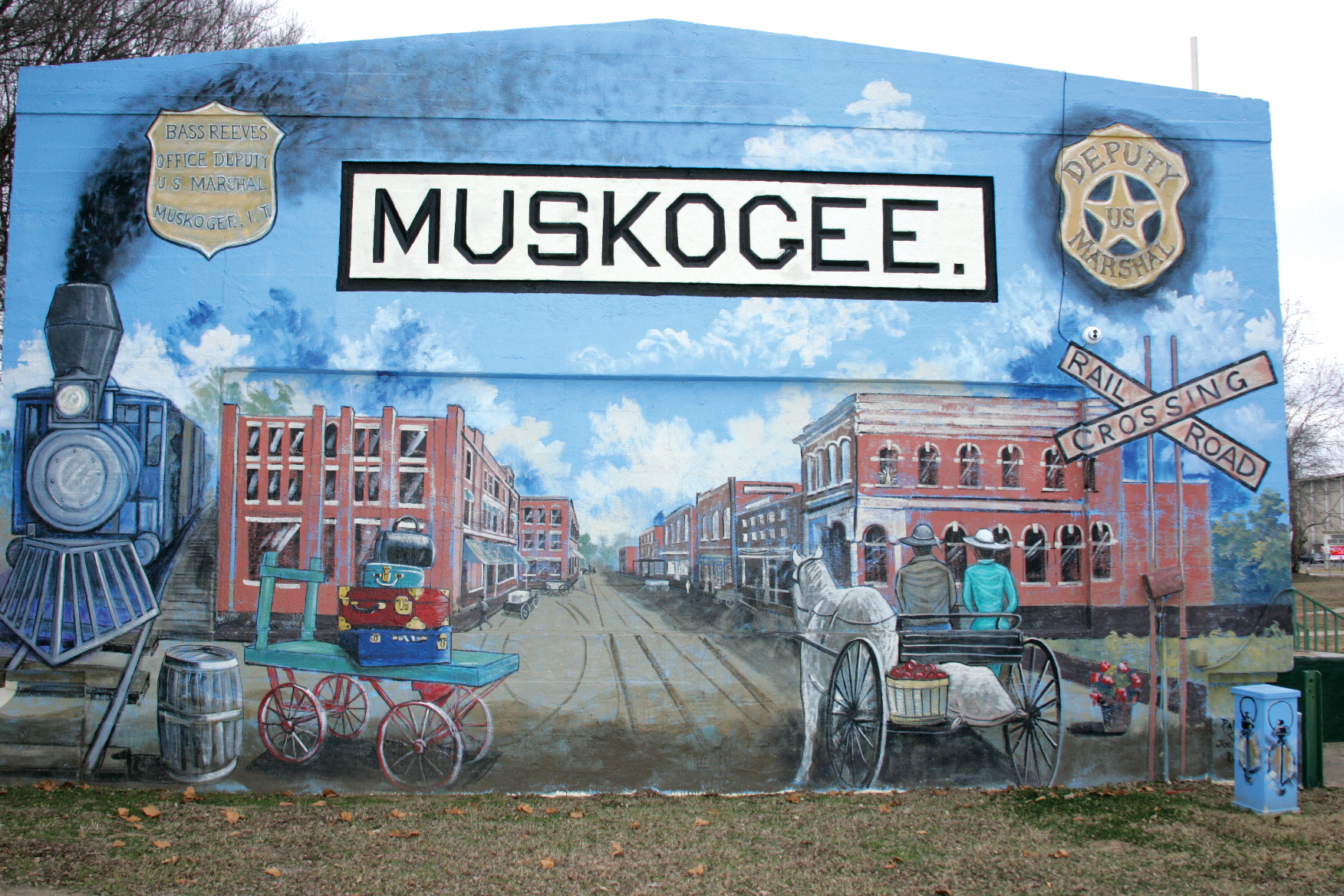
Last month, Muskogee, Oklahoma, community leaders proudly unveiled a remarkably lifelike, heroic-sized bronze statue of Bass Reeves, honoring his significant role in both the town’s and Oklahoma’s history as America’s most celebrated Black peace officer. This initiative to promote inclusivity and diversity comes at an ideal time to emphasize the beginning of Black History Month in February.
It is a testament to Oklahoma’s artistic talent and community spirit that the two statues of Deputy U.S. Marshall Reeves, destined to become the most revered images of the great lawman, were sculpted by Oklahomans.
The first statue of Reeves sculpted on horseback by the late nationally preeminent equestrian sculptor Harold Holden from Enid, Oklahoma, has stood in Fort Smith, Arkansas, since 2012. Sent by U.S. Circuit Judge Iassac Parker, Reeves rode from there into Indian Territory for 32 years to arrest outlaws as the first Black deputy U.S. marshal west of the Mississippi.
And now, the new image of the famous 6-foot-2 lawman marks the end of his groundbreaking journey from slavery to respected Muskogee police officer. It graces an area near where he walked patrol for the last two years of his life at 71. On the Three River Museum grounds, the bronze statue by acclaimed Oklahoma artist Joel Randell from Luther, Oklahoma, has a large mural backdrop at the end of the building.
The eight-foot-tall bronze statue of Reeves is depicted striding on patrol in front of a large mural recreating the Muskogee street scene from his era.
“I hope people will come here and be inspired by his dedication, hard work, and never-give-up attitude despite the overwhelming circumstances of his birth into slavery and how he overcame that,” sculptor Randell said.
This depiction now joins those iconic images promoting achievements by Black Americans and other people of African descent. Born into slavery in 1838 in Arkansas, Reeves died in 1910, almost half a century after the 13th Amendment abolished slavery in America. The 13th Amendment, ratified in 1865, was a significant milestone in the fight for civil rights and equality in the United States.
Considered the most famous Black law enforcement officer in American history, these two statues by master sculptors provide fitting bookends in depicting his exemplary career. By honoring Reeves in this way, Muskogee townspeople have given America a place where people can come to celebrate Blacks’ contributions to our country.
“He was ignored because he was black, and people of color were marginalized for years and years, and so it’s a point of pride for us here in Muskogee to acknowledge this man who overcame a lot, ” Muskogee author Jonita Mullins said at the unveiling.
For Reeves, it was not about gunplay, although he was a crack shot and killed 14 men while discharging his duties of arresting 3,000 criminals. He tried to manage the outcome of his interaction with desperados using ingenuity and originality. He often displayed a superior intellect by expending extra energy in employing guile and trickery and sometimes acting to approach the outlaws close enough to disarm them safely. This trademark mindset allowed him to safely discharge his purpose and function at a time when many deputies were killed in the line of duty.
Former University of Central Oklahoma art professor Bob Palmer,73, and Randell, 50, meticulously researched historical photos to paint a street scene mural on the end of the Three Rivers Museum (the restored Midland Valley Railroad Depot). The museum has created large displays about Reeves inside the renovated railroad depot in Muskogee’s Depot District. The new mural and statue are intended to further highlight the depth of this project by adding more to Muskogee’s rich, multi-cultural local history.
“By Joel and I painting the mural as a backdrop together and Joel sculpting the statue separately, we were able to bring Reeves and his surroundings back to life in a unique way, honoring his last two years in Muskogee,” Palmer explained.
This personal dedication to the project is a testament to the artists’ admiration for Reeves and their commitment to honoring his legacy.
Living in Bethany, Oklahoma, Palmer’s extensive experience in mural painting is evident in his impressive portfolio of over 3,500 murals across the state, making him the most-viewed artist in Oklahoma. His dedication to public art is demonstrated in his 30-year collaborations with former UCO art students, like Randell, in his mural painting business.
“Our goal was to help viewers mentally transport themselves back to when Mr. Reeves was chasing outlaws in Indian Territory and walking a beat in Muskogee,” Palmer said. “This goal underscores the intention behind the artwork, aiming to provide a unique experience for the viewers. We are proud to help the civic leaders in Muskogee provide America with a location to honor the numerous contributions Black individuals have made to our country.”
Positioned outdoors, with the midday sun casting light on the right side of the eight-foot statue, the shifting light in the round adds an interactive dimension to Reeves’ statue. This added experience matches the masterful craftsmanship demonstrated in Randell’s sculpting and the fidelity of the foundry in casting it just as he envisioned it.
“The fine art foundry, Bronze Services of Loveland in Colorado, did an outstanding job casting it in bronze. Their highly experienced artisans went above and beyond to capture my vision,” Randell said.
Photography highlights this effect, as capturing the same image from the front using a flash alters the shadows. This alteration contributes a vibrant, dynamic quality to the master sculptor’s work.
Photographers reviewing their captured images later realize they documented two distinctly different representations presented to the audience: one under natural light and another under illumination from flash photography.
“The final work of applying the patina to the bronze surface was carried out with the precision craftsmanship that this type of project demands,” Randell said. “The depth of muted subtleties of coloration I asked for in applying the patina was spectacular, especially the rich brown for Reeves’ holster as I intended it to look.”
This distinction of depth is further enhanced by the clear coat applied to the sculpture after the patina treatment, aiming to increase its durability against the elements in the future.
The overall impact of these measures results in Reeves having an inner glow that should ensure it remains a favorite among viewers for years to come.
“Another special enhancement to this monument was the great devotion to its presentation for the ages when owner Asa Nelson of Nelson Monument Company in Guthrie went to great lengths to get us a beautiful looking Dakota Mahogany granite base with Bass Reeves engraved on the front,” Randell said. “He led his highly experienced team of Dave Henson and Blake Finley to deliver the granite and the bronze sculpture that came in a shipping crate from Loveland and installed both onsite on the museum’s east side. Asa was ecstatic about being a part of the effort to honor Reeves, and it showed in how meticulous he was installing it just as I asked.”
The Three Rivers Museum has a Bass Reeves Western History Conference each year, with the next being June 26-28th, 2025
Preparing Your House For Sale
Story by Matt Neil, Oklahoma Real Estate Planner
Selling your home is a big decision, especially when it’s filled with years of memories. Whether you’re downsizing, relocating, or simply transitioning to a home that better fits your needs, preparing your property for sale is key to getting the best possible outcome. We at the Vibrant Oklahoma Group, understand that this process can feel overwhelming, but with the right approach, it can be smooth and rewarding. Let’s walk through the essential steps to get your home market-ready while honoring the memories you’ve built there
1. Declutter and Depersonalize: One of the first steps in preparing your home for sale is decluttering. Over the years, we accumulate a lot—family keepsakes, furniture, and everyday items that make a house feel like a home. While these belongings are meaningful, they can make it difficult for buyers to envision themselves in the space. Start small, tackling one room at a time. Donate or gift items you no longer need but still hold value. Store away personal photographs, memorabilia, and excess decor to create a neutral environment that appeals to buyers. This process isn’t about erasing your story, but rather making space for potential buyers to imagine their own future in the home.
2. Address Repairs and Maintenance: A well-maintained home signals to buyers that the property has been cared for. Walk through your home and take note of any necessary repairs. Small issues like chipped paint, unchanged air filters, or loose door handles may seem minor, but they can leave the impression that larger problems might exist. Consider hiring a handyman to take care of replacing burnt-out light bulbs, repairing cracked tiles or flooring, and patching up scuff marks on walls. If your home has more significant concerns, such as an aging roof or outdated electrical systems, it may be worth consulting with a realtor to determine if updates are necessary or if you should price accordingly.
3. Enchance Curb Appeal: First impressions matter, and a buyer’s experience begins before they even step inside. In the Oklahoma City Metro, where the seasons can bring unpredictable weather, ensuring your home’s exterior looks inviting is essential. Simple ways to improve curb appeal include: mowing the lawn and trimming the bushes, adding fresh mulch to flower beds, power washing the driveway and sidewalks, updating outdoor lighting, and adding flowers for a splash of color. Since many seniors prefer maintenance-free living, buyers looking at your home may want to see a property that feels move-in ready with minimal upkeep required.
4. Stage Your Home Thoughtfully: Staging doesn’t mean a complete makeover; it’s about highlighting your home’s best features. Arrange furniture in a way that makes rooms feel spacious and inviting. A few well-placed decorations—such as fresh flowers or neutral-colored throw pillows—can make a home feel warm yet universally appealing.
5. Work with a Trusted Realtor: Selling a home is more than just putting a sign in the yard—it requires experience, strategy, and personal attention. A knowledgeable realtor can help you set the right price based on market trends, help you decide what repairs are necessary, provide a trusted vendor list for repairs, market your home effectively to the right buyers, and negotiate offers to ensure the best possible outcome. The Vibrant Oklahoma Group takes great pride in helping seniors through this transition with care, ensuring that every step of the process is stress-free and tailored to their needs.
Selling your home is both an emotional and financial decision, and our goal is to help you navigate it with confidence. Whether you’re ready to list now or simply thinking about the future, we’re here to provide guidance and support every step of the way. If you’re considering selling your home in the Oklahoma City Metro, let’s talk about how to make this process smooth and successful for you. Call us at 405-757-9980 or email us at mattneill@kw.com.
Matt Neill is a realtor who has lived in Oklahoma over 17 years and enjoys spending time with his family creating memories, reading, and cheering on the OKC Thunder.
General Election Voting Smooth
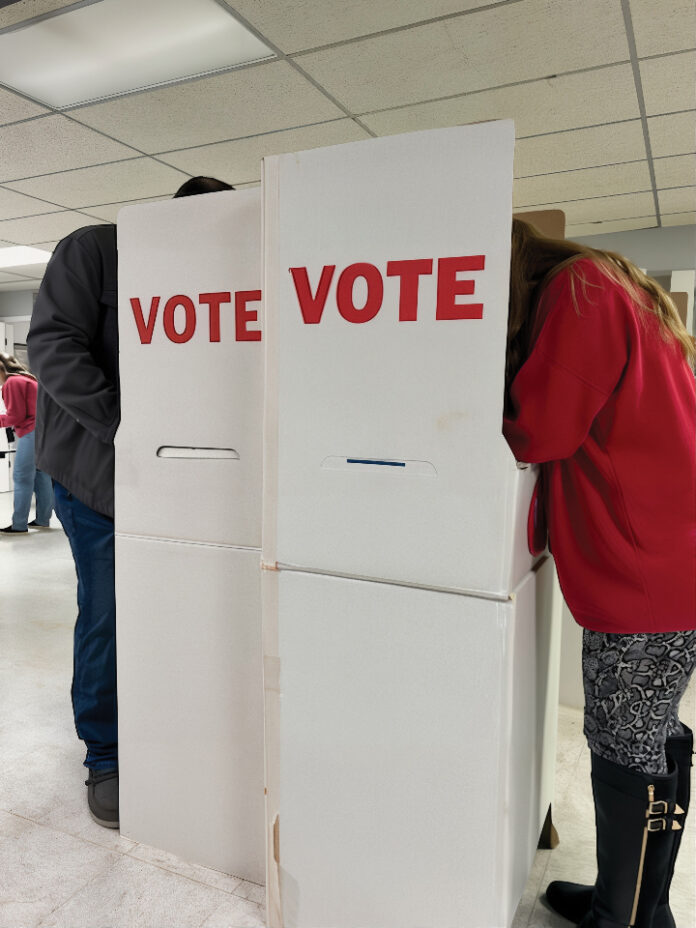
Story by
Richard Stephens, Jr.
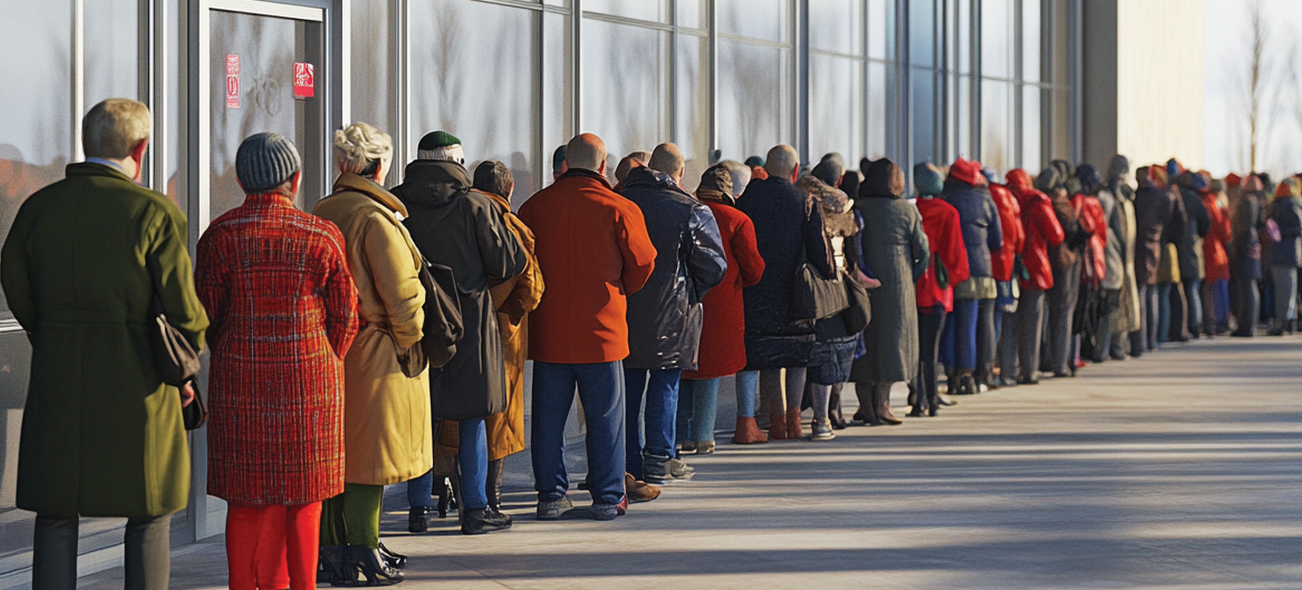
Senior News & Living visited four precincts in Midwest City, Del City and Oklahoma City on November 5, election day, to check line waits and asked Precinct Inspectors, who are in charge, if they knew of any voting irregularities or threats to poll workers.
Lines? Shorter, between 5 to 30 minutes. Online or physical threats to poll workers? None. Misha Mohr, Public Information Officer of the Oklahoma State Election Board knew of no occurrences in Oklahoma.
Voting irregularities like voting machines not accepting or reading ballots or people not signing their mail-in ballots, etc.? This reporter did not see or hear of any machines malfunctioning. In an email, Ms. Mohr State explained law requires absentee ballots be processed during a public meeting of the bipartisan County Election Board. If any absentee ballots cannot be legally counted (voter did not sign, etc.), it must be rejected, not corrected.
Ginger Carnahan, Midwest City Precinct #550406 Inspector, said, “No poll watchers for this election in Oklahoma County.” I watched as she handled two “spoiled” (written incorrectly) ballots. She tore them in half and put them in a yellow bag labeled “406 Spoiled and Discarded ballots.” Also, Carnahan did not allow one young man to vote because he wasn’t on the voter listing. A poll worker gave him the Oklahoma Election Board’s phone number to register to vote.
Precinct 547 and 326 at the Sunnylane Family Church, Del City, didn’t have problems. Karumbar Lunsford, Precinct #574 Inspector, said “voting and everything is going smooth for a presidential election.”
Jack Clay, Precinct 102 Inspector at the Moore Norman Technology Center, did not have problems. He said, “The ballots and the machines go back to the County Election Board and they process everything there. And it’s a very secure system. Every one of my (poll) workers have done a super job and the people who have come to vote have been very cordial and friendly.”







